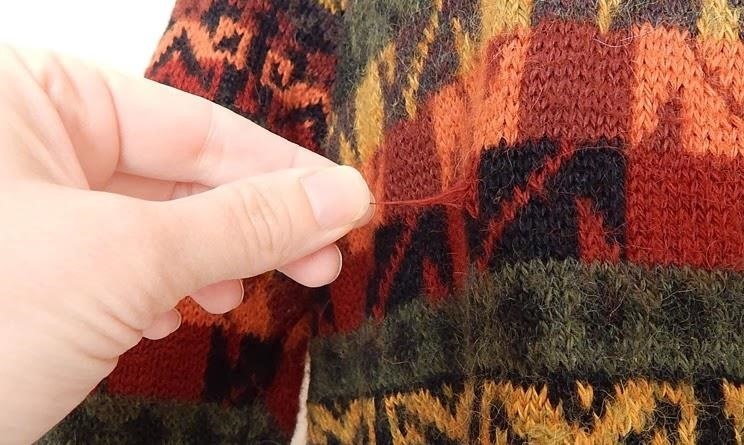Amidst the bustling fabric of life, we’ve all encountered those dreaded snags—the unwelcome threads that abruptly disrupt our garments’ pristine appearance. These pesky blemishes can leave us feeling frustrated and perplexed. However, fret not, as unraveling their secrets holds the key to restoring your wardrobe’s pristine charm.

Image: fashion.wonderhowto.com
Embarking on a journey to mend snags requires a keen eye, steady hands, and a few simple tools. Let us delve into the art of skillfully navigating these textile mishaps.
The Anatomy of a Snag
A snag arises when a thread in the fabric is forcibly pulled out of position. This can occur due to accidental contact with rough surfaces, sharp objects, or even our own fingernails. Depending on the severity, snags can range from barely noticeable puckers to gaping holes. Understanding the structure of a snag is crucial for selecting the appropriate repair technique.
There are three primary types of snags:
- Minor Snags: These occur when only a few threads are dislodged, creating small puckers in the fabric.
- Moderate Snags: This category involves more substantial thread displacement, resulting in visible breaks in the fabric’s surface.
- Major Snags: Severely dislodged threads cause significant tears or holes in the garment, requiring more complex repairs.
Threading the Needle: A Comprehensive Guide to Snag Repair
Once you’ve diagnosed the snag, the next step involves selecting the appropriate repair method. For minor snags, a simple tucking technique using a needle and thread may suffice. However, for moderate to major snags, more advanced techniques, such as darning or weaving, may be necessary.
Tucking: This straightforward method involves threading a needle with a matching thread and gently pushing the snagged threads back into place. It’s perfect for minor snags where the fabric is still intact.
Darning: This technique is used to repair larger snags, such as holes or tears. It involves creating a series of interwoven stitches to bridge the gap in the fabric, restoring its structural integrity.
Weaving: For intricate snags on delicate fabrics, weaving offers a more precise and aesthetically pleasing repair. This technique involves threading a tapestry needle with a thread and weaving it through the existing fabric to fill in the gap.
Embedding Expert Advice for Flawless Snag Repairs
Beyond the basic techniques described above, incorporating expert advice can elevate your snag repair skills to new heights. Here are a few tips for achieving invisible repairs:
- Match the Thread Perfectly: Use a thread that closely matches the color, weight, and texture of the garment’s fabric.
- Start and End Invisibly: Knot the thread at the back of the fabric for a discreet start. Similarly, weave the thread under existing stitches at the end to hide the knot.
- Respect the Fabric’s Grain: Align your stitches with the fabric’s grain to ensure a smooth and durable repair.
- Secure the Repair: Once the snag is repaired, gently press the area with a warm iron to set the thread and prevent fraying.

Image: noblecleanerscompany.com
Frequently Asked Snag-related Questions
Q: Can I use a regular sewing machine to repair snags?
A: While possible, it’s generally not recommended for delicate fabrics. A sewing machine’s tension can damage the fabric further.
Q: What should I do if the fabric is badly torn?
A: For major tears, consider seeking professional repair. They have specialized equipment and techniques to restore the garment’s integrity.
Q: How can I prevent snags in the future?
A: Practice caution when handling fabrics, especially near sharp objects or rough surfaces. Store garments properly to avoid tangling.
How To Fix Snagged Thread
A Stitch in Time, A Thread Restored
With the knowledge and skills gained from this comprehensive guide, you’re now equipped to mend snags with confidence. Remember, the art of snag repair lies in meticulous attention to detail and a patient approach. As you practice, you’ll develop the fine motor skills and the keen eye that make all the difference in restoring your garments to their pristine state.
So, are you ready to unravel the mystery of snagged threads and become a master mender? Embrace the challenge, and let the fabric of your wardrobe sing once more with a symphony of flawless seams.